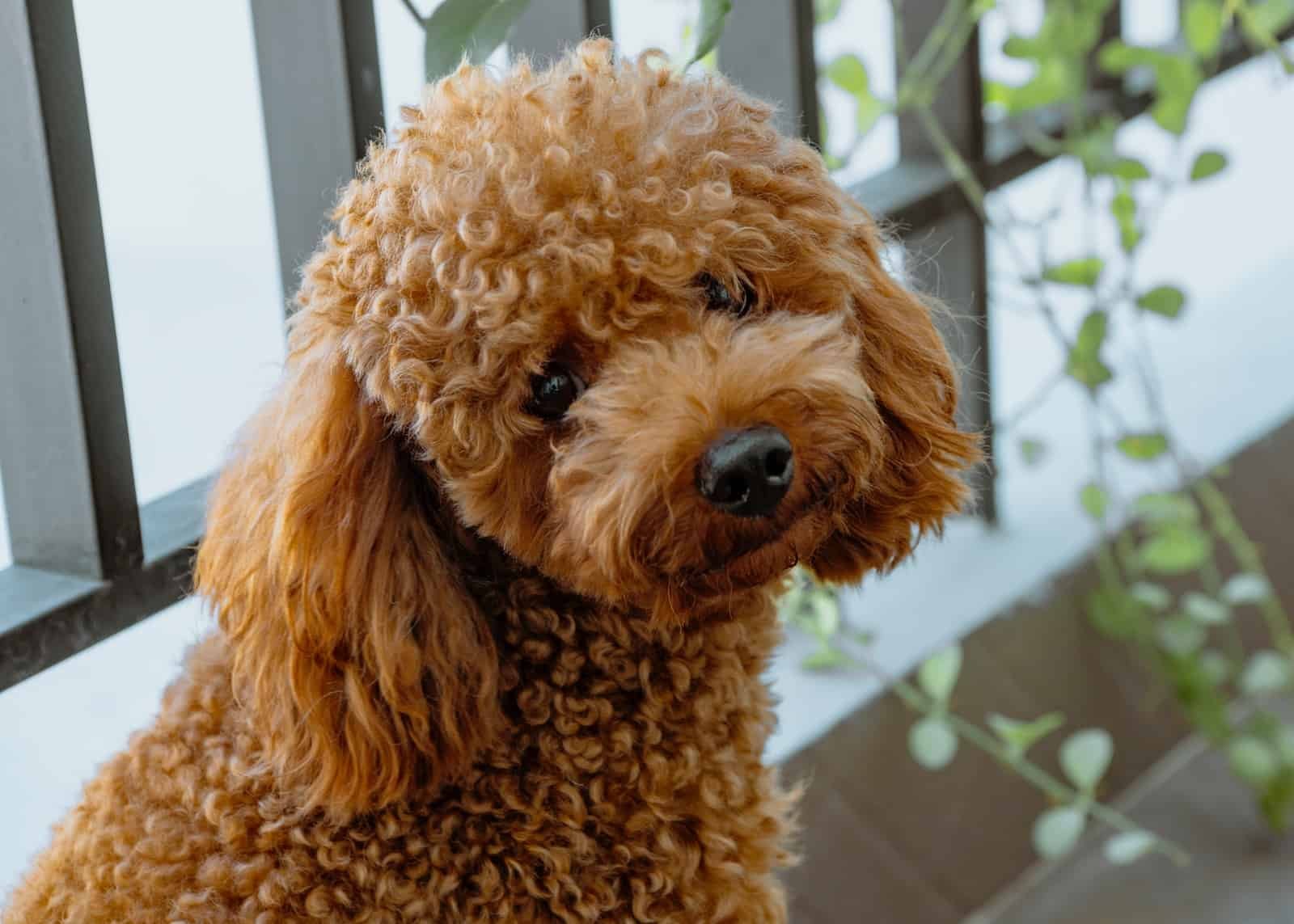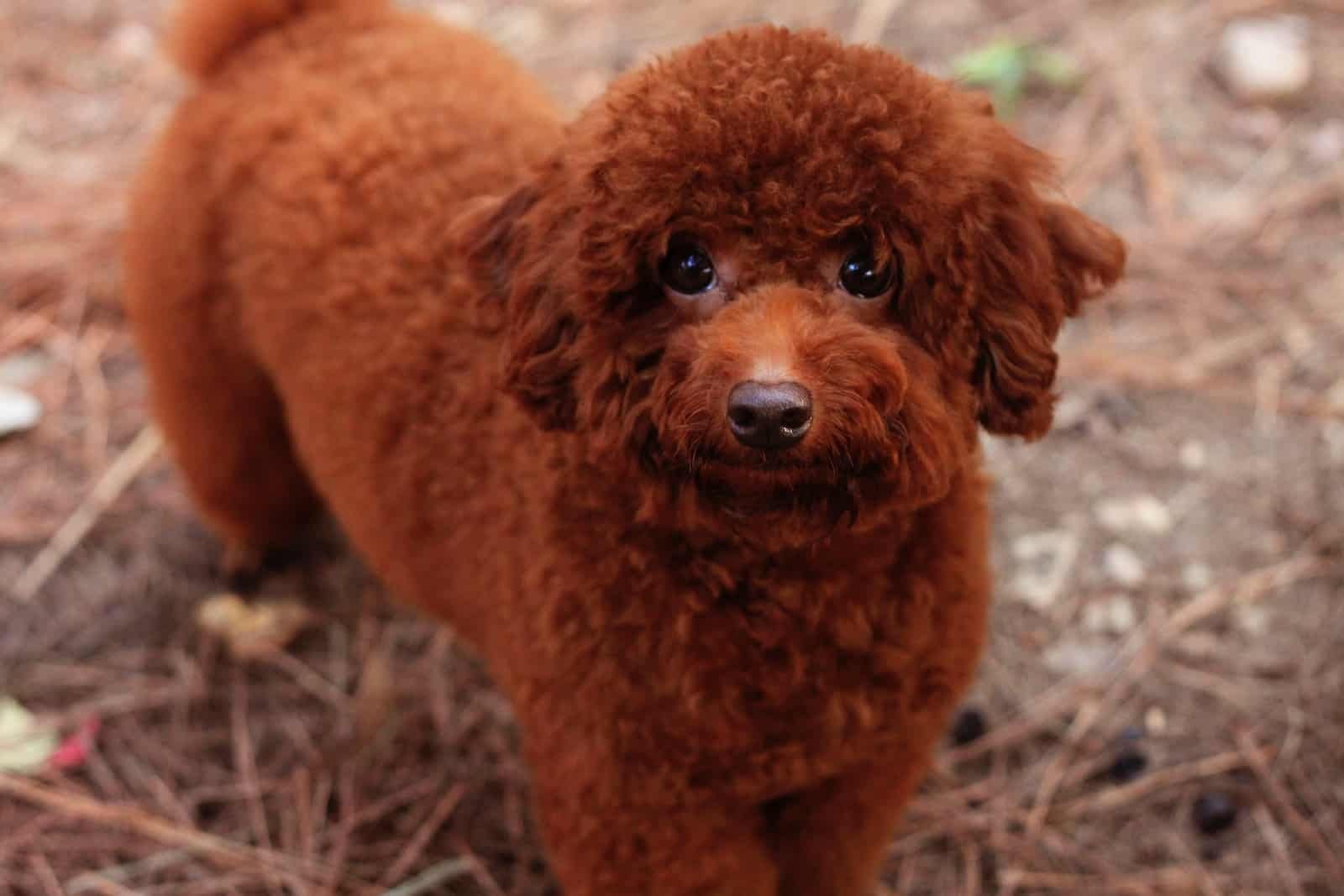
Poodles have long been known for their intelligence, loyalty, and general good nature. But why should you settle for just one? When you mix Poodles with another breed (please see brief), the result is even more of these good qualities, along with unique traits that make every combination special. You’ll find Poodle mixes to be family-friendly dogs that are great at adapting to your unique situation and bringing joy to everyone they meet.
What is a poodle mix dog?
Mixed poodles or mutts are often generated by breeding two purebred dogs together. If you are looking for a mixed Poodle, several combinations might produce what you’re looking for! There are several mixed dogs out there, but one type of dog that has been cropping up recently is a cross between a standard poodle and another breed (Get ALL Keywords from the brief: https://app.frase.io/doc/read/8e975445e7ac4a2f821a90e86bef06bf-1). Often referred to as Poodle mixes, these little dogs have earned quite a loyal following over the years. Let’s look at some different mixes so you can pick out which one might be best for you!
Which breed is best for me?
There are many factors to consider when choosing a new pet, but it all starts with what you want in a companion. Dogs come in hundreds of distinct personalities, so it really comes down to which type of best friend suits your lifestyle best. The only way to find out is to take lots of time researching each breed and paying attention as you interact with dogs during various life stages. Poodles vary drastically from one mix to another, so make sure you’re getting a dog that fits your personality, and remember. No matter how much research you do, there will always be surprises along the way! That’s part of owning a dog!
What are the different poodle mixes available?
There are many Poodle mixes available. As a result, it’s important to understand what you might get in a mixed-breed dog. Below, I summarize some popular mixes:
1) Miniature Poodle Mixes:
Often, crossbreeds result in smaller dogs, with most having more energy than their parents. This increased energy is also true with most miniature Poodle mixes. They include Cairn Terriers (Carnation or Cairn), Shih Tzus (Shitzu), Maltese Terriers (Maltese), Papillons (Papillon), etc. Some well-known crosses are Australian Silky Terrier, Jack Russell Terrier, Javanese, etc. These dogs make great lapdogs but require much attention and care to avoid separation anxiety or becoming destructive when left alone at home for too long. They are hypoallergenic but have issues with barking excessively at unfamiliar people, which can cause problems in an apartment setting where neighbors will complain about excessive noise when walking them on a leash. A little training goes a long way with these breeds, so it’s important to raise them early since they often grow up before their owners realize what sort of responsibility they now face.
2) Medium-sized Poodle Mixes:
No set breed is used as parents; instead, dog breeders crossbreed two different medium-sized dog breeds. Notable crosses include Goldendoodles (Golden Retriever), Labrador Poodles (Labradoodle), Australian Shepherd (Australian Silky Terrier). They make excellent pets and companions and thrive around children and other animals but also need obedience training, lots of time outside, regular grooming, health exams, and constant companionship to keep them happy. Both sexes can be high energy without sufficient exercise, which leads some individuals to become destructive if bored. While these dogs are hypoallergenic, they do shed year-round, although not as much as full-sized Poodles, so they’re still an excellent choice for people with allergies. With early socialization, most will adapt well to apartment living. Still, others may suffer from separation anxiety when left alone at home all day or may require additional training or medication before they feel comfortable in that situation. The cost of food is slightly higher than their parents’ since puppies tend to grow larger than expected, so consider budgeting accordingly before bringing one home!
3) Poodle-cross Mixes:
Various dog breeds are used to create these mixes, which means there are no set characteristics. These crosses include Spoodles (Poodle/Spaniel), Labradoodle (Labrador/Poodle), Schnoodles (Schnauzer/Poodle), Goldendoodles (Golden Retriever/Poodle), etc. They are just as popular as designer dogs because they have a distinct look without being too different from traditional breeds, making them ideal for families looking for a hypoallergenic pet without compromising on looks or temperament. However, their exact personalities will depend on which two dog breeds were used. Hence, it’s important to research thoroughly before buying one since some crosses will produce more aggressive pets than others. They require lots of attention, plenty of exercise, and socialization, so plan carefully if you’re considering keeping one in an apartment setting! However, their hypoallergenic coats require little maintenance beyond regular brushing, although most will need to be trimmed every few months at least once they reach adulthood. You can expect grooming costs to be lower than with full-sized Poodles but higher than other mixed-breed dogs. Overall, these mixes make excellent pets – ensure that there’s someone around who has time to take care of one daily if you’re thinking about getting a purebred! Getting a smaller breed helps owners travel with their dogs so long as they stay socialized. However, all crossbreeds have issues with being prone to separation anxiety, so it’s important to have plenty of ways to distract them when alone.
Which poodle mix is considered the best?
Poodle mixes aren’t something we hear about often. Why? Well, it could be because they don’t exist, or it could be because people don’t know about them. Either way, we’re here to shed some light on these adorable dogs that may become a part of your family. Let’s start with two popular mixes: Labradoodle and Goldendoodle. Labradoodles and Goldendoodles are the most popular mixes in the poodle family, but what makes them so special? There are many reasons these mixes are so popular, but it really comes down to two things: non-shedding coat and hypoallergenic nature. Because of these traits, Labradoodles and Goldendoodles have gained immense popularity in the last 20 years. If you consider one of these two crossbreeds, it may be hard to know which one to choose. Both Labradoodles and Goldendoodles make great family pets and are beloved for their cute looks and great temperament. Let’s look at their history, characteristics, and where they come from to help you decide which pup will be your new BFF! A Labradoodle has an ancestry that includes not only Labrador Retrievers but also Poodles. Today, many mixes include Golden Retriever, Australian Cattle Dogs, or other non-poodle dogs, all with lovely results. While Poodles are known for being smart dogs with excellent brains who enjoy challenging tasks, Labradors are hailed as some of the most versatile hunting/working dogs in existence today… along with being totally huggable. The Goldendoodle is mixed with poodle and a Golden Retriever. These dogs are typically sweet, friendly, gentle, kind-nature, loving companions. And while Goldendoodles are not hypoallergenic, they produce less dander than other breeds because of their curly coat of fur. However, it’s important to note that every dog has their own unique personality, so there’s no guarantee that anyone will have these characteristics. If you want an outgoing, energetic dog who is at least partly hypoallergenic, then consider a Goldendoodle. But if you’re looking for a laid-back pooch with minimal shedding and dander (but zero guarantees on personality), then check out our first option: Labradoodle.
What’s in a name?
The name Labradoodle originated from one dog breeder, Wally Conron. He coined Labradoodle after seeing his friend’s (Louise Ainsleigh) yellow Labrador Retriever cross with her Standard Poodle, Dudley. This family of mixed-breed dogs became known as Labradoodles, though others called them Puggles or Doodledogs at first. Nowadays, many people refer to these wonderful mixes by their last name. The name Goldendoodle started when a breeder in Oregon wanted to create a family dog that would be hypoallergenic. The breeder mixed with golden retriever and poodle hoping to create what he called Allergy-free goldens. Today’s Goldendoodles are also referred to as hybrids or designer dogs. As more people seek allergy-friendly dogs, these mixes are becoming increasingly popular.
How do they look?
Both Labradoodles and Goldendoodles have a coat that looks similar to a Lab’s thick fur, sometimes curly and sometimes wavy! While they may not be completely hypoallergenic, most have an undercoat instead of an overcoat, so dander is less noticeable. That being said, anyone with allergies should always check with their doctor before bringing any dog into their home, as there is no guarantee as to how your body will react once these pups shed. It’s also important to note that both types come in over one coat length; you can find long-haired and short-haired dogs among both breeds (and even some curly-coated ones). Both fall on either end of size extremes: Standard Poodles are on average medium-sized while Labrador Retrievers range from large to giant. Labs produce smaller puppies on average, while poodles produce larger puppies (most Goldendoodles weigh between 25 and 45 pounds). Their wavy coats make them slightly higher maintenance than some other poo mixes, but nothing more than another dog breed would need. The Sheepadoodle is likely to be one of the most active doodle mixes. While these mixed poodles usually have longer life spans than other Poodle mixes, they should still get adequate daily exercise. Despite being primarily bred for their hypoallergenic qualities, these cute little puppies can also suffer from many common dog allergies, especially fleas, grasses, and mold spores. As these dogs are hypoallergenic, they’ll need frequent trips to groomers so that their fur stays short enough not to irritate sensitive skin or cause allergic reactions. The basic maintenance costs will run around $400 per year, including food, vaccinations, training classes, toys/treats, etc.… plus more if specialty grooming products are required. In addition, how old is an adult dog?
Which poodle mix is the calmest?
Poodle mixes can vary in terms of energy levels, grooming needs, and life expectancy. If you’re looking for a mix that’s as calm as possible, review one of the mixes listed below.
1) Australian Labradoodle
If you’re looking for a low-energy dog that doesn’t shed much, look no further than an Australian Labradoodle. These long-haired dogs have minimal grooming needs and typically live between 12 and 15 years, making them ideal for people who want a long-term commitment to their dog.
2) Labrador Retriever – Golden Retriever Mix
Labradoodles are a combination of Golden Retriever and Labrador Retrievers, both breeds that have a reputation for being energetic and playful. While Labradoodles can definitely play, they are a bit calmer than other Poodle mixes because of their higher Golden Retriever lineage. All things considered, Labradoodles are pretty mellow. While they need regular exercise like any other breed, they don’t require hour-long hikes or daily jogs.
3) Standard Poodle – Miniature Schnauzer Mix
A standard poodle can be a very high-energy dog, but a miniature schnauzer adds a dash of chill to its personality. Miniature Schnauzers are a great option for those who want a high-energy dog but don’t have as much time to devote to exercise and training. The standard poodle requires more exercise than other mixes, making it difficult for those with busy lifestyles.
4) Toy Poodle – Shih Tzu Mix
A Toy Poodle – Shih Tzu mix will be less active than most other mixes. These dogs are great for people who live in apartments or homes with little to no outdoor space. They’re also fairly low-maintenance compared to other mixes, meaning they won’t need extensive grooming sessions. While you’ll want to monitor your dog’s teeth and gums, you won’t have to worry about excessive shedding or constant bathing sessions. While all the above mixes are calm breeds – the Bernedoodle, also known as a Berner-poo, can be a superb choice for families with young children. The breed is noted for its gentle temperament and even disposition; since they were originally bred to act as therapy dogs. They also are fluffier than either parent, which means lots of grooming work early on; don’t bring home a fluffy puppy unless you’re committed to keeping them looking presentable at all times! The cost of food varies but averages out slightly higher than full-sized Poodles or mixed breeds because of their larger appetites.
What is the healthiest poodle mix?
A Toy-poodle mix, a cross between a Toy Poodle and a miniature or small breed, is a healthy choice if you want an active dog. Because of their small size, they’re considered a good option for people with physical limitations or homes with limited space. Toy Poodles have been known to live up to 15 years on average, making them a long-term companion in anyone’s home. These dogs are smart, sociable, and eager to please. They do well with training but can be difficult to housebreak. If left alone too much or allowed to get bored, Toy Poodles may turn into destructive chewing machines! And keep in mind that some breeds shed more than others ask about shedding habits before selecting any breed, so you’ll know what type of commitment you’re getting into. Many people want a dog who will play fetch or go jogging along with them; if that sounds like you, then it might not be wise to bring home a Toy-poodle mix! If you love small dogs and live an active lifestyle, then a Toy-poodle mix may give you everything you want. Another option is a Maltese-poodle mix for smaller families who want a toy breed but need more energy from their companion. They’re also great at learning tricks, but can be stubborn. Just make sure you get one from a reputable breeder rather than purchasing from a pet store or over Internet sites such as Craigslist. Breeders screen for genetic problems, vet, check each dog before selling it, and can give you an honest opinion about whether your chosen poodle mix will fit into your lifestyle.
What is the most popular poodle mix?
Miniature/toy or teacup poodles are two of the most popular mixes. The tiny size makes them ideal for apartment living, while their hypoallergenic coat makes them a popular choice for people with allergies. Another benefit is that these mixed-breed dogs are often priced less than purebreds, so if you’re on a budget, it might be easier to find room in your home and your wallet for one of these little guys. Despite their small stature, they require daily grooming, just like any other poodle breed. If you have enough time in your schedule to devote to maintenance, they could make an excellent addition to your family. But if not, it might be better to look at another poodle mix or a different type of dog altogether. In terms of behavior, many owners say that miniature/toy or teacup poodles are rather standoffish when meeting new people, and dogs and even children may need some gentle encouragement from mom or dad when it’s time for playtime. Also, keep in mind that these tiny furballs require lots of exercises; they can overheat easily, so if you live in a warm climate, they might not be right for you. Finally, like any dog breed, they can develop health problems over time (think Cushing’s disease), so do plenty of research on potential genetic issues before making a final decision about whether these mixed-breed dogs are good for your family. If you have kids, there are several factors to consider; for example, it could be especially important to find an extremely hypoallergenic mix that won’t aggravate allergies. Talk with other parents whose kids have allergies before deciding which type of pet would work best in your home. There are many things to consider when looking at potential poodle mixes! It never hurts to chat with an expert at PetSmart who can help steer you toward the most appropriate mix for your household.
What is the best poodle mix for a family?
When deciding on a dog breed, it’s always best to consider what characteristics are most important to you. For instance, if space is limited at home or if allergies run rampant in your household, a mixed-breed dog might be a better fit. While there are countless possibilities and far too many Poodle mixes to list here, there are several options that are intelligent and gentle enough around children. Before taking home any dog, do plenty of research into both parents; otherwise, some breeds might end up being destructive. With over two dozen variations ranging from Toy to Standard, there’s something for everyone! Poodle mixes can bring a great deal of fun into any home, but they’re not just fluff. When treated well and properly trained, Poodle mixes can be highly loyal companions who enjoy life as much as their human companions do. If you’re considering bringing home a mixed-breed Poodle, find an experienced breeder who has plenty of experience caring for both parents. After all, it’s not only about how these dogs look. It’s about how they perform over time! The more information you have before making a purchase, especially from a reputable source, will help ensure that the Poodle mix will be an excellent addition to your life.
How Would A Poodle Mix Suit Your Lifestyle?
If you’re looking for a mix of poodles, it’s best to figure out what sort of life situation will suit them. Some mixes do better in apartments or with elderly owners, while others are more suited to country life. Think about how much exercise they’ll need, whether they’ll get along with other animals in your home, and how demanding they are for grooming. Research your mix thoroughly before bringing one home. To ensure that everyone knows what to expect, you can then discuss specifics with your breeder at each stage when considering breeds, negotiating prices, selecting puppies, etc. Finally, set up an appointment at a groomer for their first do-over; even mixes usually shed their puppy fur sooner than expected! No matter which mix is right for you, remember: it’s always better to adopt from a shelter or rescue organization. Poodle mixes are wonderful dogs but they aren’t suited to all families. Make sure you know what you’re getting into before making any commitment. If possible, visit a rescue organization or meet some mixes at dog parks beforehand so that you can get a better idea of how much attention they need and where their boundaries lie. That way, if anything isn’t working out as expected, you can bring them back to be re-homed with less stress on everyone involved. Likewise, try not to base your decision solely on looks alone; don’t pick a pup just because he has poodle eyes. Think about his needs and behavior, as well as those of other pets (if applicable) in your home. Each pup will grow up differently depending on how much training you give him; make sure he knows commands, like sitting and staying early. There are many types of poodle mixes available to potential dog owners, each with its own unique look and personality traits. By learning about the most popular poodle mixes, you can choose one that best fits your lifestyle and one that won’t cause you too much trouble throughout the years.
Things To Consider When Adopting A Poodle Mix Dog
Despite their status as one of the most well-known breeds, poodle mix dogs may not be right for everyone. Poodle mixes inherit their intelligence, good nature, and hypoallergenic coats from Poodle parents; however, when crossed with other breeds, they can develop different temperaments or physical features than either parent. If you’re thinking about adding a mix to your home, here are some important factors to keep in mind when deciding which type of poodle might be best suited for your lifestyle:
- Standard mixes make excellent companions, but if you’re looking for a herding dog, a hypoallergenic dog, or even a cuddly lap dog instead, you’ll want to find out what kind of mix will best suit you.
- Mixed Standard Poodles often get along well with children and get on famously with other pets.
- Mixed Miniature Poodles are playful, energetic dogs who are protective around their families but reserved around strangers.
- Mixed Toy Poodles are especially social dogs who can sometimes be too friendly for their own good!
- While they come in all shapes and sizes, poodle mixes are just as lively as other dog breeds. If you’re looking for a dog who can keep up with active lifestyles or who can take part in canine sports like agility, most mixes will be happy to oblige!
- Poodle mixes typically live 12-15 years on average; while most owners assume their dogs will outlive them by many years due to their great health and energy levels, it’s still important to do some research on longevity rates among different crossbreeds before committing.
- Poodle mixes are versatile companions with endless potential. From being non-shedding hypoallergenic pets to herding or cuddly lapdogs, each type has its own set of benefits as well as drawbacks! It’s best to adopt one with an understanding of what each mix can offer so that neither dog nor owner is dissatisfied in the long run.
It takes a special person to care for a large pet like a standard mix poodle. These dogs have been bred as watchdogs, companions, and hunters. Not only do they require lots of attention from their owners, but many will also need plenty of room to stretch their legs inside or outside a house! If you have a spacious home or apartment, these dogs may be a good fit for you. For dog ownership, the two things you must be prepared for our time and money. While some breeds are considered more expensive than others, all dogs require some level of investment of your time and money. One way to determine how much of an investment you’re getting into with any particular breed is to check its size, grooming needs, exercise needs, and life expectancy so that you can determine if this breed fits your lifestyle.







